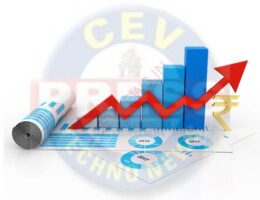STRUCTURAL CHANGES IN THE ECONOMY AND THEIR EFFECT ON GDP
Structural Changes in the Economy and Their Effect on GDP
In India, structural changes in the economy have been pivotal in shaping its GDP growth trajectory over the years. These changes encompass shifts in sectors, technological advancements, policy reforms, and demographic transitions, all of which have profound implications for economic output and development.
Shift from Agriculture to Industry and Services
Historically, India has been primarily agrarian, with a large percentage of its workforce engaged in agriculture. However, over the decades, there has been a noticeable shift towards industry and services. This structural transformation has been driven by factors such as urbanization, industrialization, and technological advancements. As more people move from agriculture to manufacturing and services, the overall productivity and efficiency of the economy have improved.
Impact of Technological Advancements
Technological progress has been a major driver of structural change in India’s economy. The adoption of digital technologies, automation, and advancements in telecommunications have revolutionized sectors such as IT, finance, and retail. These changes have not only boosted productivity but have also created new economic opportunities and improved the quality of goods and services produced.
Policy Reforms and Liberalization
India’s economic liberalization in the early 1990s marked a significant structural shift. Reforms aimed at deregulation, privatization, and opening up the economy to foreign investment unleashed new growth potentials. This led to increased competitiveness, integration into the global economy, and diversification of industries, thereby contributing to higher GDP growth rates.
Demographic Transition and Human Capital
India’s demographic dividend, characterized by a large working-age population, has been another critical structural factor. As more young people enter the workforce and contribute to economic activities, there is a potential for increased productivity and economic growth. However, leveraging this demographic advantage requires investments in education, skills development, and healthcare to enhance human capital.
Challenges and Opportunities
Despite the positive impact of structural changes, India faces challenges such as income inequality, regional disparities, and environmental sustainability. Addressing these issues requires targeted policies that promote inclusive growth, infrastructure development, and sustainable practices.
Structural changes in India’s economy have been transformative, influencing its GDP growth dynamics significantly. From a predominantly agrarian base to a more diversified economy led by industry and services, coupled with technological advancements and policy reforms, these changes have shaped India’s economic landscape. Moving forward, sustaining growth will depend on addressing challenges effectively while harnessing opportunities presented by demographic shifts, technological innovations, and global integration.


